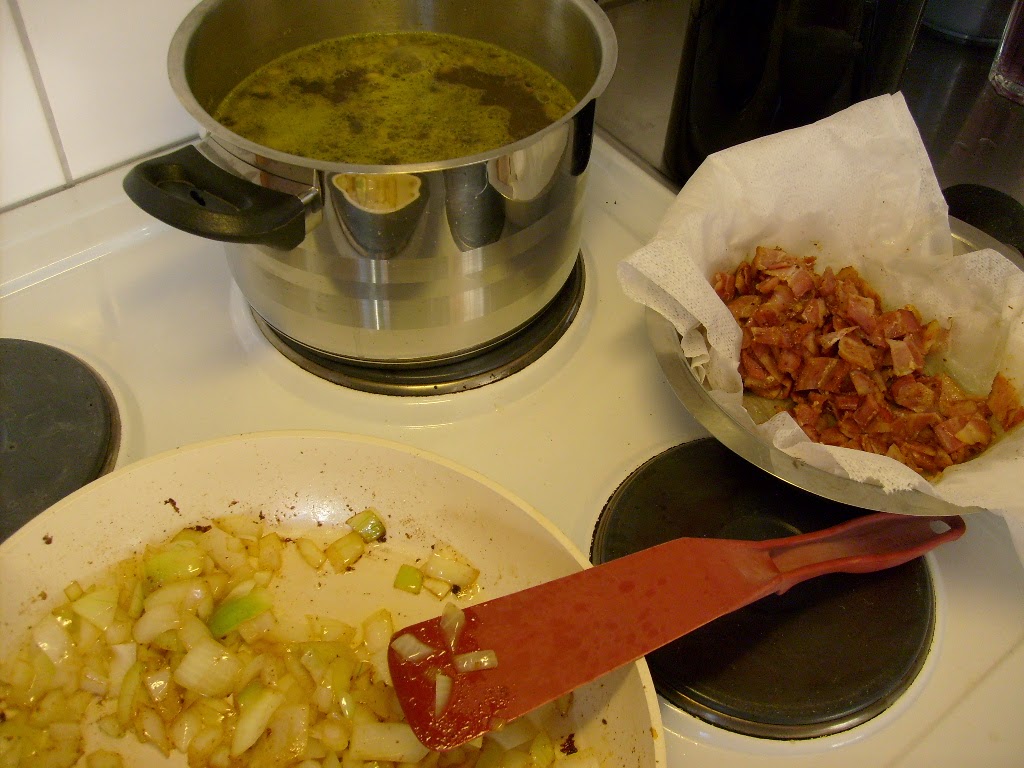He took me to a very fancy place, Hemmagastronomi (= home gastronomy), which is a combination restaurant-delicatessen store. We shared three medium size dishes: vendace roe with blini, smoked shrimp with aioli, and a plate with dried hams, salami, cheese, pickles, and tapenade. They served a delicious sour dough bread with that. Beer for me and a lemonade for him. I wouldn´t mind going back there!
One evening, the sister-in-law (who has been visiting the mum-in-law) treated us to her home-graved salmon, spiced with elderflower saft and gin. I have the recipe, and here it is:
Take a 900 g (2 pounds) salmon filet, with the skin still on, take out any remaining bones and cut it in half. Mix 4 tablespoons of sugar, 4 teaspoons of salt, 1 tablespoon freshly ground white pepper, and zest from one lemon; rub this into the salmon. Put one filet on top of the other, skinside out and one thick end against one thin end. Put a double layer of plastic bags around it and add 4 tablespoons of concentrated elderflower saft and 3 tablespoons of gin. Put this on a plate in the fridge for 2-3 days, turn the bag over a couple of times during that time. Then scrape off the spices, cut the fish into thin slices (discard the skin!) and serve with lemon, ground black pepper, boiled potatoes, and mustard-dill sauce.I didn´t take a photo of it, but it had the nicest pink colour ever. There is a blogger who has a good recipe for the entire dish, sauce and all, here.
One of the days I made some more cornbread and let the husband taste Dave´s black eye peas, which he liked a lot. "I imagine this is what the cowboys ate," he said and he might be right, I guess. I intend to bring some to the mum-in-law eventually, as I have much left in the freezer.
 |
| Mash, fried salmon, tunnbröd, mango chutney. |
Our personal quirk is perhaps that we accompany fried salmon with creme fraiche and mango chutney, which makes for a very good blend of tastes. The idea came from a friend who said that mixing creme fraiche and cloudberry jam makes a very good salmon sauce. We prefer blending it on the plate - if nothing else, it´s frugal.
Today, we had leftover köttsoppa (= meat soup) built on bits and pieces from a kalops (meat stew), Dave´s black eye peas, and green peas from the freezer. I baked a fresh loaf on rye and whole wheat flour. Nothing fancy, but good all the same.
Next week, I will be alone and do a pantry cleaning menu. It´s a personal sport of mine which I do when the husband is away for a whole week - the challenge being not going to the store at all, but making due with what´s available. The eating equivalent of "shopping one´s closet", I suppose. But first, the husband is taking me out for Italian!

















































